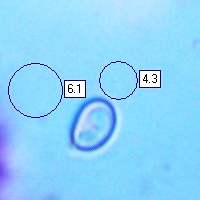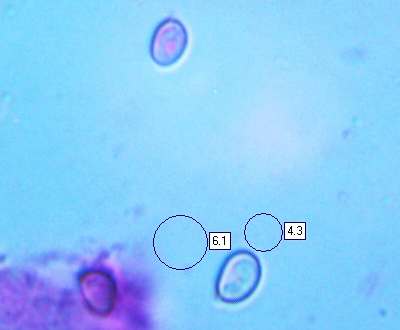Tapinella atrotomentosa (Batsch) Šutara - Velvet Rollrim
Phylum: Basidiomycota - Class: Agaricomycetes - Order: Boletales - Family: Tapinellaceae
Distribution - Taxonomic History - Etymology - Identification - Culinary Notes - Reference Sources
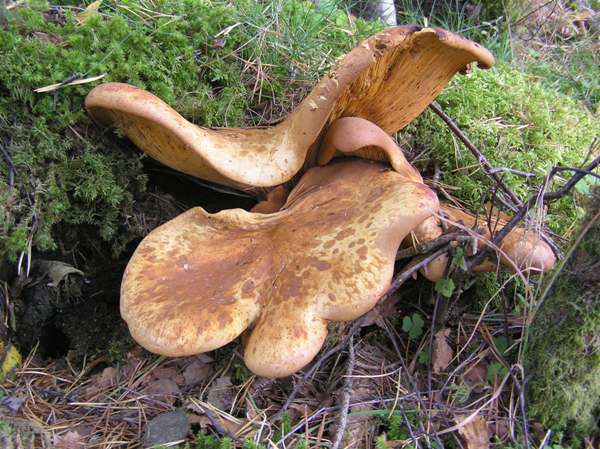
Only an occasional find in southern Britain and Ireland, this large wood-rotting mushroom is a very common sight on pine stumps in Scotland's Caledonian Forest.
Formerly grouped with the mycorrhizal rollrims such as Paxillus involutus, the Velvet Rollrim bore the name Paxillus atrotomentosus; however, it is now known to be a saprobic fungus (a wood rotter) and only distantly related to Paxillus species. Since 1992 it has been sited in a separate genus.
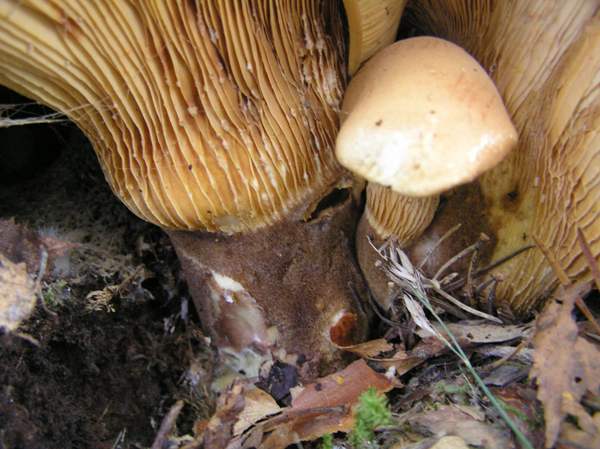
Distribution
An infrequent throughout England, Wales and Ireland, the Velvet Rollrim is much more common in the pine forests of Scotland.
This unmistakable mushroom of conifer forests is also found incentral and northern parts of mainland Europe. Velvet Rollrims have a wide global distribution and are fairly common and widespread in norther USA and Canada.
Taxonomic history
This mushroom was originally described in 1786 by the German naturalist August Johann Georg Karl Batsch (1761 - 1802), who named it Agaricus atrotomentosus. (In the early days of fungal taxonomy, most gilled mushrooms were included in a huge genus Agaricus; later many new genera were erected into which the majority of species were transferred.)
The Velvet Rollrim was transferred to the genus Tapinella in 1992 by the Czech mycologist Josef Šutara (born 1943), who renamed it Tapinella atrotomentosa.
Synonyms of Tapinella atrotomentosa include Agaricus atrotomentosus Batsch, Paxillus atrotomentosus (Batsch) Pers., Rhymovis atrotomentosa (Batsch) Rabenh., and Sarcopaxillus atrotomentosus (Batsch) Z. Malysheva & E.F. Malysheva.
Etymology
Tapinella as a mushroom genus was circumscribed in 1931 by the French mycologist Jean-Edouard Gilbert (1888 - 1954).Tapinella comes from Tapis, meaning a carpet. The specific epithet atrotomentosa is much more straigtforward. It comes from the Latin prefix atro- meaning black, and tomentosa meaning covered in short, dense, matted hairs - a reference to the distinctive surface of the stems of Velvet Rollrims, which are black and tomentose (velvety).
Identification guide
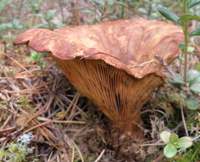 |
CapInitially a rounded cap with an eccentric stem, expanding and developing an irregularly scalloped and wavy inrolled margin; surface finely felty; golden-brown to orange-brown with darker patches; 10 to 30cm across. |
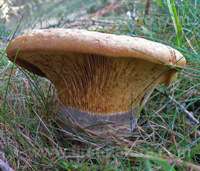 |
GillsDecurrent - often deeply so; crowded; creamy-yellow, turning brown. Stem3 to 8cm long and 4 to 7cm diameter; velvety; grey, brown or black; no stem ring. |
SporesEllipsoidal, smooth, 5-6 x 3-4.5µm. Spore printBrown. |
|
Odour/taste |
Odour not distinctive; inedible and possibly poisonous, so tasting this very distinctive mushroom is inadvisable and certainly unnecessary for identification purposes. |
Habitat & Ecological role |
Saprobic on the roots and stumps of dead pines and occasionally other conifers. |
Season |
June to November in Britain and Ireland. |
Similar species |
Paxillus involutus, the Brown Rollrim, is smaller and has brownish gills that darken when bruised; its fibrous stem is not velvety. |
Culinary Notes
Most field guides that cover edibility counsel against eating Velvet Rollrim, even when thoroughly cooked. They have been collected for food in parts of Eastern Europe, where the smaller, young fruitbodies are considered good to eat; older one taste bitter and have been known to cause stomach upsets. I would therefore strongly recommend that Velvet Rollrims are not collected for eating.
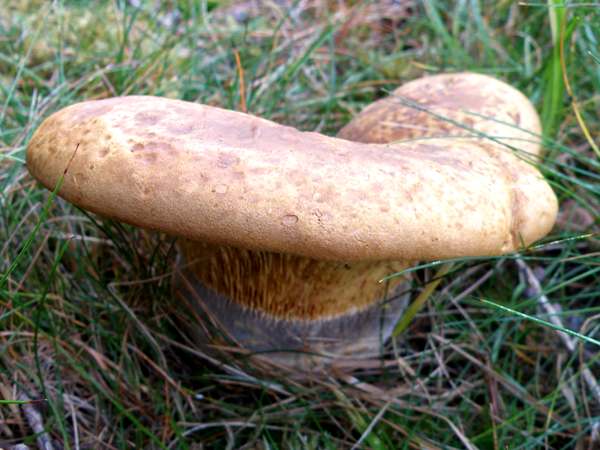
Reference Sources
Fascinated by Fungi, 2nd Edition, Pat O'Reilly 2016, reprinted by Coch-y-bonddu Books in 2022.
BMS List of English Names for Fungi
Mattheck, C., and Weber, K. Manual of Wood Decays in Trees. Arboricultural Association 2003.
Dictionary of the Fungi; Paul M. Kirk, Paul F. Cannon, David W. Minter and J. A. Stalpers; CABI, 2008
Taxonomic history and synonym information on these pages is drawn from many sources but in particular from the British Mycological Society's GB Checklist of Fungi.
Fascinated by Fungi. Back by popular demand, Pat O'Reilly's best-selling 450-page hardback book is available now. The latest second edition was republished with a sparkling new cover design in September 2022 by Coch-y-Bonddu Books. Full details and copies are available from the publisher's online bookshop...
